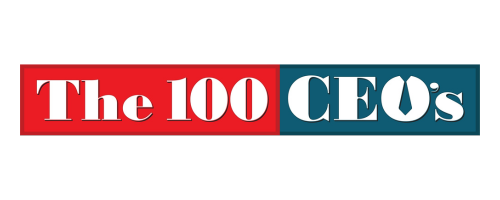You may be wondering how to navigate the rapidly evolving landscape of global business leadership in today’s tech-driven world. As I investigate into the top technological innovations making waves, I aim to shed light on how these advancements can enhance your strategies and decision-making processes. From artificial intelligence to blockchain, understanding these technologies is vital for maintaining a competitive edge and driving growth in your organization. Let’s explore the innovations that are redefining business leadership and discover how you can leverage them effectively.
Artificial Intelligence and Machine Learning
While the landscape of global business leadership continues to evolve, artificial intelligence (AI) and machine learning (ML) stand at the forefront of this transformation. These technologies enable leaders to harness vast amounts of data, uncovering insights that drive strategic decision-making and innovation. As a result, I find that integrating AI and ML into business operations not only enhances efficiency but also positions organizations to stay competitive in an ever-changing marketplace.
Enhancing Decision-Making
The use of AI and ML profoundly impacts decision-making processes by providing leaders with predictive analytics and data-driven insights. This enables you to go beyond instinct and intuition, relying instead on clear evidence to inform your strategies and responses.
Automation of Business Processes
With the incorporation of AI and ML, I am witnessing a remarkable transformation in the automation of business processes. These technologies streamline repetitive tasks, allowing you to focus on high-value activities that require human oversight, creativity, and strategic thinking.
Further, embracing automation means that your organization can achieve higher efficiency and productivity. I have noticed that systems powered by AI can handle everything from customer service inquiries to inventory management, reducing errors and freeing up your workforce for more complex challenges. By optimizing these processes, you not only save valuable time and resources but also enhance overall operational effectiveness, ultimately driving greater business outcomes.
Blockchain Technology
Clearly, blockchain technology is revolutionizing the way businesses operate on a global scale. Its decentralized nature allows for secure and efficient data sharing among stakeholders, which ultimately enhances trust and accountability in various industries. As I explore the potential of blockchain, I find it compelling how it can streamline processes and foster innovation in leadership practices.
Transparency and Security in Transactions
About blockchain, one of its primary advantages is the inherent transparency and security it offers in transactions. By utilizing a distributed ledger system, all parties involved can verify transactions in real-time, which minimizes the risk of fraud and enhances the overall integrity of the business process.
Smart Contracts and Their Applications
About smart contracts, these self-executing contracts with the terms of the agreement directly written into code are transforming how organizations manage relationships and agreements. They automate processes and eliminate the need for intermediaries, resulting in significant time and cost savings for businesses.
Indeed, the myriad applications of smart contracts extend far beyond simple transactions. They can facilitate complex agreements in areas like supply chain management, financial services, and even real estate. As I observe the landscape, smart contracts promise not only efficiency but also transparency in contractual relationships, reshaping how organizations enforce and uphold commitments in a digital world.
Internet of Things (IoT)
Some of the most significant advancements in global business leadership are driven by the Internet of Things (IoT). This technology facilitates seamless connectivity between devices, enabling real-time data exchange that allows businesses to respond more quickly to market changes and customer needs. By harnessing IoT, companies can create smarter operations, improve customer experiences, and ultimately enhance their competitive edge.
Data-Driven Insights and Strategies
Among the key benefits of IoT is its ability to provide data-driven insights that inform strategic decision-making. By collecting vast amounts of real-time data from connected devices, businesses can analyze trends, identify opportunities, and make informed projections. This data empowers leaders like you to adjust your strategies and optimize your operations, ensuring you remain ahead in an ever-evolving market landscape.
Improving Operational Efficiency
By implementing IoT solutions, businesses can significantly improve their operational efficiency. With automated systems that monitor performance and resource utilization, organizations can identify bottlenecks and optimize processes. This leads to reduced waste, improved asset management, and ultimately drives profitability.
Operational efficiency can be dramatically enhanced through IoT by enabling predictive maintenance, which minimizes downtime and extends the lifespan of equipment. With real-time monitoring, you can anticipate failures before they happen, ensuring smooth operations and a reliable supply chain. By optimizing inventory management through connected systems, you can reduce excess stock and enhance order fulfillment, resulting in increased customer satisfaction and loyalty. In essence, IoT not only streamlines business processes but also transforms how you interact with your customers and manage resources, fostering a more agile and responsive organization.
Cloud Computing
Keep in mind that cloud computing has revolutionized how businesses operate by transforming traditional IT infrastructures. This innovation empowers organizations to access resources and services over the internet, enabling global reach and collaboration. With its vast capabilities, it streamlines operations and enhances productivity, shaping the future of business leadership.
Scalability and Flexibility for Businesses
At the core of cloud computing is its remarkable scalability and flexibility. You can easily adjust your resources according to changing business needs, allowing for rapid growth or contraction without significant upfront investments. This adaptability ensures that your organization can remain competitive in an ever-evolving marketplace.
Cost-Effective Solutions
An attractive benefit of cloud computing is its cost-effective solutions that minimize operational expenses. By utilizing a pay-as-you-go model, you can significantly reduce hardware and maintenance costs, allowing you to invest more in core business activities. This efficiency directly contributes to your bottom line.
Flexibility is the primary advantage that cloud computing brings to your organization. It eliminates the need for expensive, on-premises hardware and allows for easier management of software applications. You can scale your resources up or down as needed, ensuring that you only pay for what you use. This means that small businesses can access enterprise-level services without financial strain, and larger companies can optimize their operations more effectively. By championing these cost-effective solutions, you can foster a more agile and responsive business environment.
Augmented Reality and Virtual Reality
For businesses looking to innovate, augmented reality (AR) and virtual reality (VR) serve as transformative tools, reshaping how leaders strategize and engage with stakeholders. These technologies are not just enhancing product demonstrations but are also vital in decision-making processes, providing immersive environments that help visualize complex data. As I explore the potential of AR and VR, I see immense opportunities for creating more engaging connections between brands and consumers.
Transforming Customer Experience
About AR and VR, these technologies are redefining customer experience by providing interactive and immersive environments that allow you to engage with products in unprecedented ways. This pivotal shift fosters a deeper connection with your customers, enabling them to visualize and experience offerings before making purchasing decisions. I find this integration increasingly valuable, as it elevates your brand’s storytelling and allows for enriched interactions that resonate with consumers.
Innovative Training and Simulation
Experience a new era of training and simulation powered by AR and VR, which create realistic environments for skill development. These immersive experiences help you absorb knowledge and practice skills more effectively than traditional training methods. I appreciate how this technology rapidly enhances learning outcomes, particularly in areas that require hands-on experience, allowing for safe, repeatable practice without real-world consequences.
At the forefront of this evolution, AR and VR provide an engaging platform where you can practice critical tasks in simulated environments. I see industries such as healthcare, aviation, and manufacturing leveraging these technologies to refine their training programs. The ability to replicate real-life scenarios ensures that you can gain experience and confidence before stepping into high-stakes situations. By embracing these innovative solutions, you’re not just enhancing the learning curve but also fostering a more skilled workforce prepared for future challenges.
5G Technology
To comprehend the transformative power of 5G technology, we must recognize its unprecedented speed and reliability in connecting devices. This next-generation mobile network is reshaping how businesses operate, offering enhanced capabilities for communication, collaboration, and data processing. As I explore the impact of 5G, it becomes evident that organizations need to adapt swiftly to leverage its advantages in a fast-paced digital landscape.
Impact on Communication and Collaboration
Before the advent of 5G technology, businesses faced limitations in connectivity that hindered effective communication and collaboration. Now, with lightning-fast speeds and lower latency, teams can interact seamlessly across the globe in real time. You can facilitate remote working arrangements and enhance virtual meetings, leading to increased productivity and innovation within your organization.
Enabling Real-Time Data Processing
Data processing in real-time has never been more achievable than with 5G technology. This capability allows your organization to analyze and utilize information instantly, leading to informed decision-making and improved operational efficiency.
For instance, industries like healthcare can leverage 5G to transmit high-resolution medical images instantly for remote consultations, significantly improving patient care. Additionally, the manufacturing sector can utilize real-time data for predictive maintenance, reducing downtime and optimizing productivity. By integrating 5G into your business strategy, you can unlock the potential of advanced analytics, Internet of Things (IoT) applications, and automation, positioning your organization at the forefront of innovation.
Conclusion
Following this exploration of technological innovations shaping global business leadership, I believe that staying informed and adaptive to these advancements is important for your success. As I look ahead, I recognize that leveraging tools like AI, data analytics, and digital collaboration will empower you to enhance decision-making, foster innovation, and lead with agility. By embracing these technologies, I am confident that you can position yourself and your organization at the forefront of today’s competitive landscape, driving growth and impact across industries.

